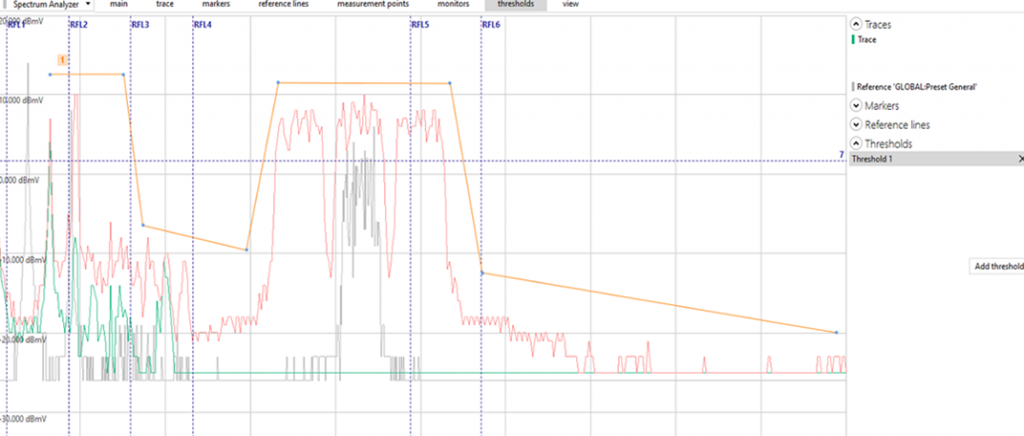With proactive network maintenance (PNM) becoming more and more important nowadays, return path monitoring as well as the DOCSIS PNM toolset by CableLabs play a crucial part in discovering issues in the outside plant before they impact the service delivery to the end user.

Back in the days, return path monitoring hardware was set up in either the headend or hub locations and relied on a standalone spectrum analyzer/tracer, connected over a power splitter to the RF return path signal as it is received from the optical node (analog fiber). Depending on the Test & Measurement (T&M) device that is used, the RF switch could either be integrated or deployed standalone to achieve a setup where signals from a series of different nodes can be applied on the same device. Although the latter saves costs, it comes at the expense of reduced accuracy and reduced measurement intervals.
More recently, the vast majority of the PHY silicon used cable modem termination systems (CMTS) featuring native support for upstream spectrum capture. Some operators already decided to use this capability to significantly simplify the measurement setup and related wiring. Naturally, this setup also intrinsically lowers costs (CAPEX/OPEX) and saves important space by eliminating the need for external T&M devices as well as associated RF splitter networks. On top of that, the link itself, which used to be split to feed both the analyzer/tracer as well as the CMTS input, enjoys a small increase of the available power budget, resulting in better broadband performance and higher measurement accuracy.
The DOCSIS DAA is the way forward
But then, the latest DOCSIS distributed architecture (DAA) comes into the picture. With this architecture, the RF signals originate and terminate in the cable plant RPHY node instead of on the CMTS (digital fiber). As a consequence, return path monitoring in DAA networks has to rely on measurements made by the node itself.
The migration of cable HFC networks from centralized analog fiber topologies to distributed architectures (digital fiber) requires careful financial and capacity planning, followed by extensive upgrades to the plant. In reality, such an evolution may take a year or even a couple of years to complete.
That’s exactly why it is critical for operators to use a spectrum visualization and monitoring platform like DataMiner that is both architecture and implementation agnostic. In other words, when using DataMiner, operators have the option to monitor the status of the upstream spectrum for the different physical nodes from a single pane of glass, whether they are:
- terminated in a headend location (centralized architecture) and monitored with spectrum analyzers.
- terminated in a headend location (centralized architecture) and monitored with analyzers integrated into the CMTS.
- terminated in the node itself (distributed architecture).
Since DataMiner has access to any return spectrum trace, the platform is ideally suited to use those traces to address different use cases. Continuous spectrum monitoring (round-robin) and spectrum fault detection (comparing traces against a predefined min and max trace) detect impulse noise (using max-hold feature), common mode noise and other ingress events that may be present. Since DataMiner supports the CableLabs DOCSIS PNM KPI collection and metrics, group delay issues and reflections in the network are equally detected and visible on DataMiner along with spectrum traces.
As such, DataMiner is a one-stop shop for operational monitoring and management of your cable plant.